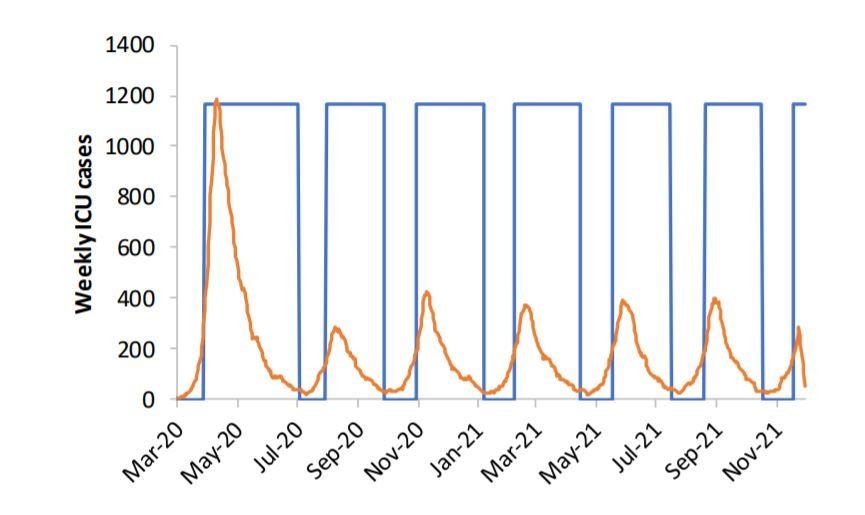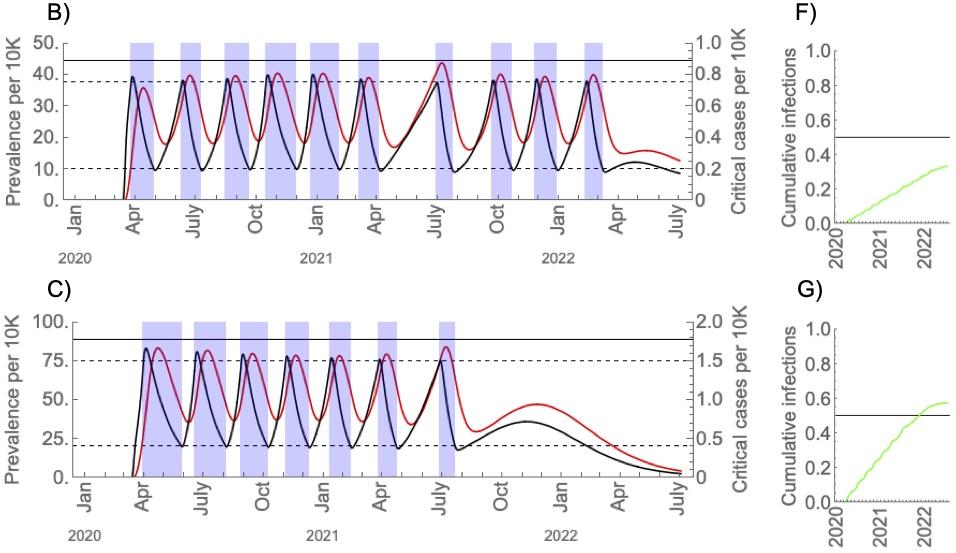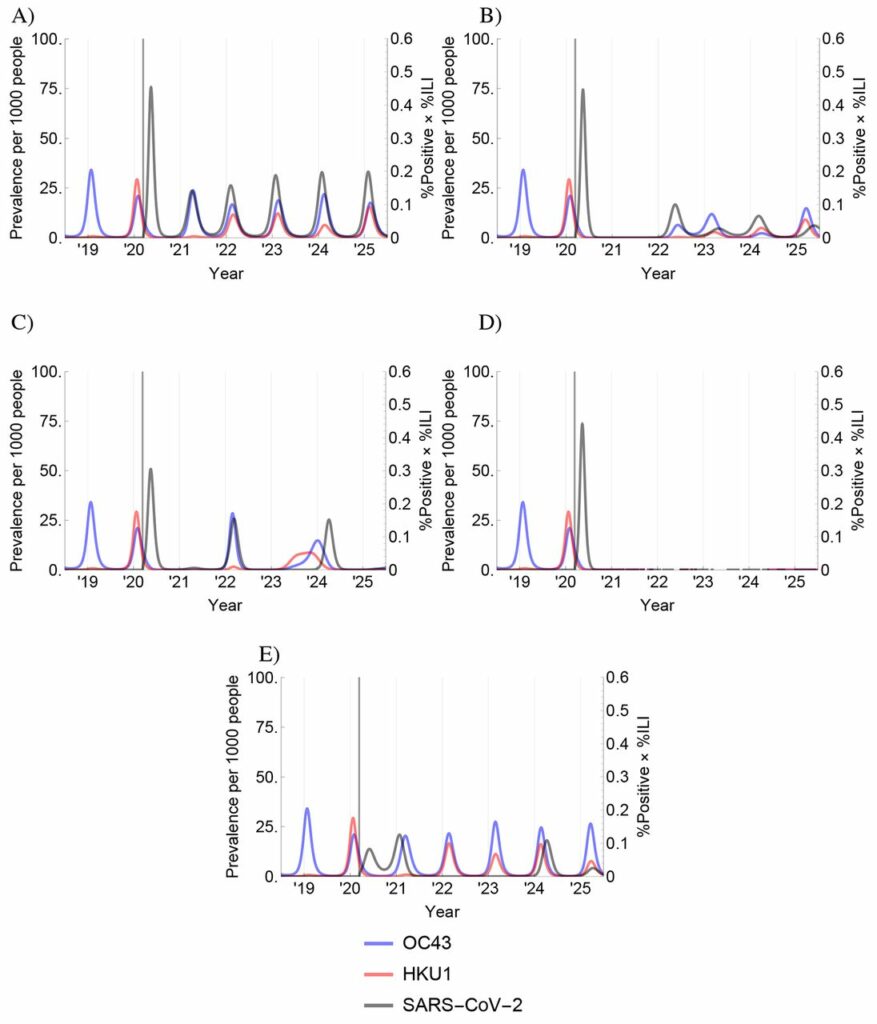If you’re reading this, you’re most likely at home under strict orders to remain indoors until further notice in order to ‘flatten the curve’. Tensions of all sorts are already high — socially, psychologically, and economically. Naturally, some might wonder when will be able to see our friends and family like the way we used to. When will we get back our boring and predictable lives? Well, might as well sit tight because this will take a while.

A new study published this week by researchers at Harvard University’s T.H. Chan School of Public Health analyzed various scenarios of how the coronavirus, known as SARS-CoV-2, will likely spread over the next five years. The analysis suggests that in order not to overburden the national healthcare system, social distancing measures need to continue until 2022. What’s more, “a resurgence in contagion could be possible as late as 2024,” the authors add.
That doesn’t mean that we’re going to stay cooped up indoors for the next two years. Strict social distancing measures that we’re seeing now will eventually be lifted once the number of hospitalized cases drops below a safe threshold.
However, outbreaks will inevitably creep back in and when that happens — it’s time for a new lockdown. This will likely go on and off multiple times.
One extremely important factor that will determine the long-term evolution of the COVID-19 pandemic is immunity.
After a person is infected with a pathogen, the immune system produces antibodies to fight off that said infection. These antibodies can circulate through the body for a while, offering protection against infections caused by the same pathogen. If many people in a community are immune, a virus can’t spread that well or can die off entirely, and we’ve achieved some form of herd immunity.
But the problem is that we don’t know exactly how long the immunity to SARS-CoV-2 lasts after a person gets sick. It could be forever, or only a couple of months.

Scientists have some theories. Two coronaviruses, known as HKU1 and OC43, regularly infect humans every season causing common cold symptoms. The antibodies produced by these human coronaviruses offer short-term immunity of about one year. If these antibodies offer any protection against SARS-CoV-2, viral transmission in a community should be affected.
But if the immunity to SARS-CoV-2 is just as transient, this means that we’ll have annual wintertime waves of infection, meaning the novel coronavirus might become seasonal and a regular part of our lives. If immunity lasts longer than that, then we might have surges of cases every couple of years.
“The transmission of many respiratory pathogens, including the human coronaviruses that cause mild common cold-like syndromes, is seasonal in temperate regions, peaking in the winter months,” the authors write.
In the best-case scenario that immunity is permanent, the virus ought to burn itself out by 2025, the study found. However, that is highly unlikely. In South Korea alone, 111 people who seemingly recovered from COVID-19 have been readmitted to the hospital after testing positive for the virus again.
Whatever the immunity scenario might be, the model shows that one-time social distancing — strict lockdown of a couple of weeks followed by business as usual — cannot stop the transmission of the virus. A single lockdown would simply delay the onslaught. Instead, to keep the virus at bay we’ll have to live through intermittent periods of distancing over several years.
The fact of the matter is that social distancing measures are so effective that there is little heard immunity being build. So some of us will have to gradually get sick such that each new wave is shorter than the previous one.
“Intermittent social distancing can maintain critical care demand within current thresholds,” the authors advised in their new study published in the journal Science.

Besides herd immunity, the length of time between lockdowns will depend on the availability of treatments (currently there is no drug that has passed clinical trials for COVID-19 although many are in the works) or a vaccine (at least 12-18 months away).
Additionally, if a country can afford to increase its intensive care unit capacity, that will buy it more time to keep the economy running until a certain threshold is reached a new lockdown becomes inevitable. This means that if we want to spend more time in between lockdowns, governments will have to invest heavily in medical infrastructure.
“In summary – on its own, social distancing may need to be maintained intermittently into 2022 to avoid overwhelming critical care capacity. Increased capacity and additional interventions such as contact tracing, therapeutics, and vaccines are urgently needed to ease this burden,” wrote Stephen Kissler, lead authors of the new study and a researcher at the Department of Immunology and Infectious Diseases at Harvard T.H. Chan School of Public Health.
In an intermittent distancing approach, lockdowns should commence when there are more than 37.5 cases of COVID-19 per 10,000 adults in the population. At this threshold, the number of patients in need of critical care should stay at 0.89 persons for every 10,000 people.
The study did not analyze the economic impact of strict social distancing measures, which might ultimately have an important role to play in future policies. If the economy is in a very bad shape, some governments might decide to prolong the decision to impose a new lockdown out of fear of popular unrest. Another limitation is that the model did not assume social distancing measures only among high-risk groups, such as the elderly and those with underlying chronic conditions.

These findings seem to agree with those of other modeling research groups. A team of researchers at Stanford led by Erin Mordecai also found that keeping the coronavirus in check will require multiple periods of tightening and loosening restrictions, like a lightswitch.
“We saw this during the 1918 flu pandemic when many U.S. cities lifted their restrictions after 3-8 weeks and saw large second peaks of flu transmission. That pandemic eventually infected about a third of the world population and killed 50 million people. To avoid a resurgence of COVID-19, we need to apply multiple interventions over a long period of time – 12 to 18 months or more – until effective treatments and/or vaccines are widely available,” Mordecai said.
“We don’t need to be totally locked down for a year or more. Adaptive strategies that actively turn on and off interventions – like a light-switch – can allow for periods of greater mobility while still keeping the epidemic at levels our healthcare system can manage. Improved testing capacity will allow us to use more targeted approaches to identify and isolate infected people and their social contacts,” she added.
No one knows yet whether SARS-CoV-2 will change its viral behavior come summertime, which is why blood tests are of the utmost importance going forward. Such tests will reveal what percentage of the population has developed antibodies for COVID-19 and how long this immunity might last.


